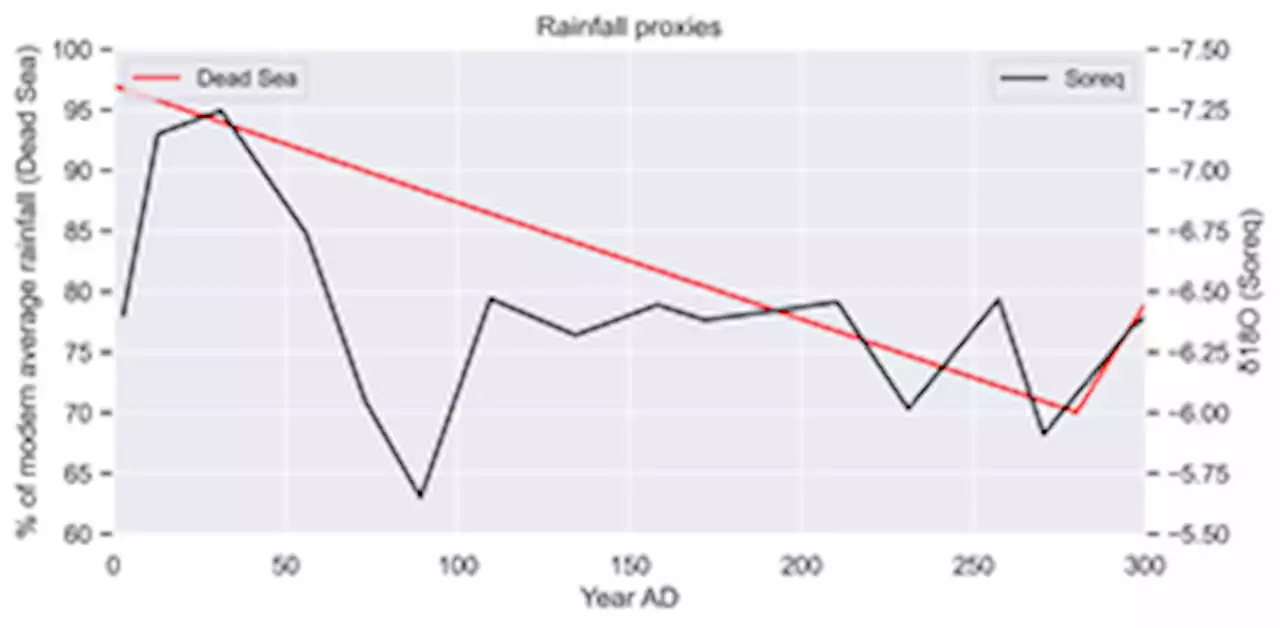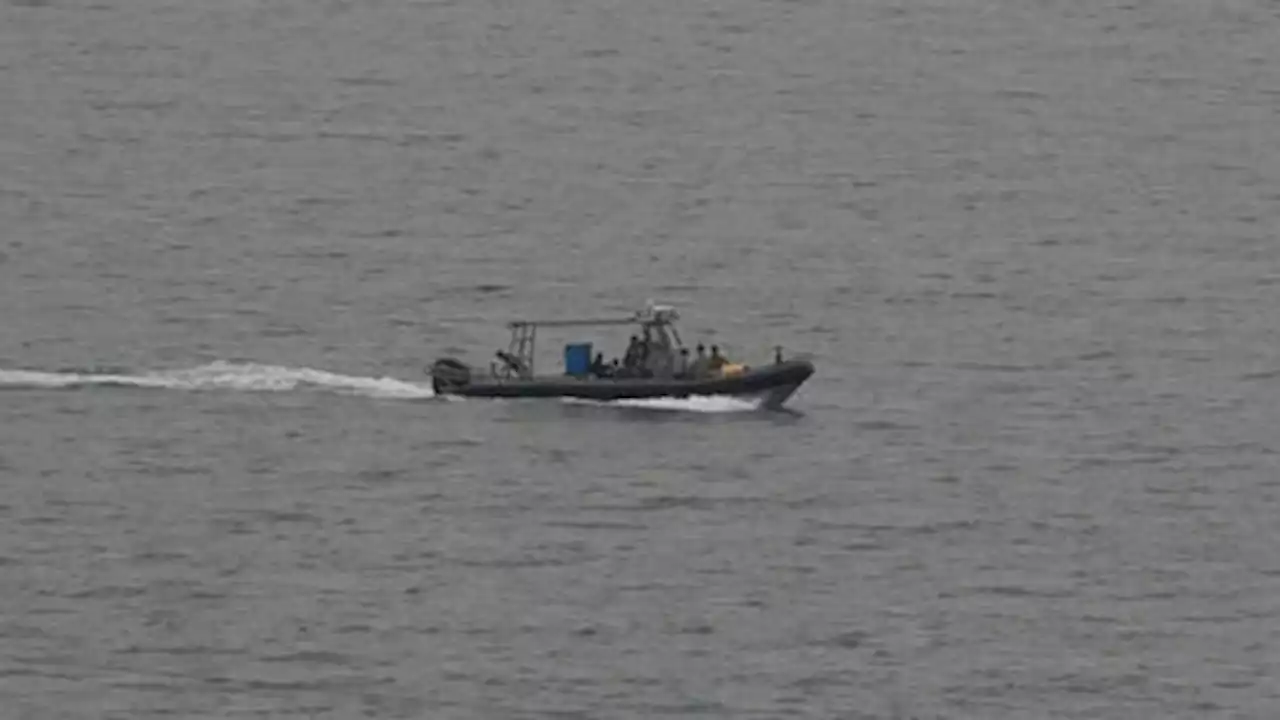Syrian authorities find 34 dead and 14 survivors from a migrant boat near the coastal city of Tartous that survivors said had left from northern Lebanon, says Samer Qubrusli, the director-general of ports
A Lebanese navy vessel searches for people from a migrant boat that sank overnight in the Mediterranean Sea, near the shores of Tripoli, north Lebanon.
On Thursday, Qubrusli cited survivors as saying that the boat left from Minyeh in north Lebanon days ago and added that those on board had held several nationalities. Lebanon has seen a spike in migration driven by one of the world's deepest economic crises since the 1850s. Dozens of people in the northern Lebanese city of Tripoli held a protest earlier on Thursday to alert authorities that they had lost contact with a migrant boat with dozens on board.READ MORE: The Lebanese army on Wednesday said it had rescued 55 people on board one malfunctioning boat in the country's territorial waters that it towed back to shore.
About 80 Lebanese, Syrian and Palestinian migrants were on board, of whom some 40 were rescued, seven were confirmed dead and around 30 officially remain missing.
United States Latest News, United States Headlines
Similar News:You can also read news stories similar to this one that we have collected from other news sources.
 Food security in Roman Palmyra (Syria) in light of paleoclimatological evidence and its historical implicationsFood security in ancient urban centers is often discussed but rarely formally modelled. Despite its location in an inhospitable desert where food production is a constant challenge ancient Palmyra grew from a small oasis settlement in to a major geopolitical player. Here, we present a spatially explicit reconstruction of the land use and agricultural yield expectations of its hinterland determining the maximum feasible population of the city. Coupling the hinterland carrying capacity model with palaeoclimatic data allowed us to track changes in the food security of the city in the face of changing climate. While initially the hinterland could provide ample food resources for the small settlement with time the deteriorating climate conditions after the Roman Optimum (100 BCE-200 CE) collided with rapidly growing population of the city. The nexus of these two processes fall at mid third century–a period of profound changes in the structure of Palmyrene society, its geopolitical situation and its historical trajectory. The results point to increasingly precarious subsistence levels as a likely factor behind rapid militarization, shift towards an autocratic regime and military expansion of the city in the late third century CE. As a well-established causal mechanism in many modern conflicts and crises, food security is also a potential causal factor behind historical events, if a hard one to prove due to the difficulty of identifying relevant data patterns. The methods presented establishes a robust research pipeline that can be used on other ancient urban centers, contributing to the construction of an empirically supported model of how food security shaped human history, past and present.
Food security in Roman Palmyra (Syria) in light of paleoclimatological evidence and its historical implicationsFood security in ancient urban centers is often discussed but rarely formally modelled. Despite its location in an inhospitable desert where food production is a constant challenge ancient Palmyra grew from a small oasis settlement in to a major geopolitical player. Here, we present a spatially explicit reconstruction of the land use and agricultural yield expectations of its hinterland determining the maximum feasible population of the city. Coupling the hinterland carrying capacity model with palaeoclimatic data allowed us to track changes in the food security of the city in the face of changing climate. While initially the hinterland could provide ample food resources for the small settlement with time the deteriorating climate conditions after the Roman Optimum (100 BCE-200 CE) collided with rapidly growing population of the city. The nexus of these two processes fall at mid third century–a period of profound changes in the structure of Palmyrene society, its geopolitical situation and its historical trajectory. The results point to increasingly precarious subsistence levels as a likely factor behind rapid militarization, shift towards an autocratic regime and military expansion of the city in the late third century CE. As a well-established causal mechanism in many modern conflicts and crises, food security is also a potential causal factor behind historical events, if a hard one to prove due to the difficulty of identifying relevant data patterns. The methods presented establishes a robust research pipeline that can be used on other ancient urban centers, contributing to the construction of an empirically supported model of how food security shaped human history, past and present.
Read more »
 'I didn't give up': Family reunites after 8 years apartA woman immigrated here from Egypt after escaping the war in Syria, but her husband stayed behind. They reunited at the airport Tuesday.
'I didn't give up': Family reunites after 8 years apartA woman immigrated here from Egypt after escaping the war in Syria, but her husband stayed behind. They reunited at the airport Tuesday.
Read more »
 Türkiye rescues hundreds of refugees in Eastern MediterraneanTürkiye saves 283 refugees and migrants stranded in Eastern Mediterranean on a small boat, on a day President Erdogan raised refugee issue at UNGA and rebuked Greece's illegal pushback policy
Türkiye rescues hundreds of refugees in Eastern MediterraneanTürkiye saves 283 refugees and migrants stranded in Eastern Mediterranean on a small boat, on a day President Erdogan raised refugee issue at UNGA and rebuked Greece's illegal pushback policy
Read more »
